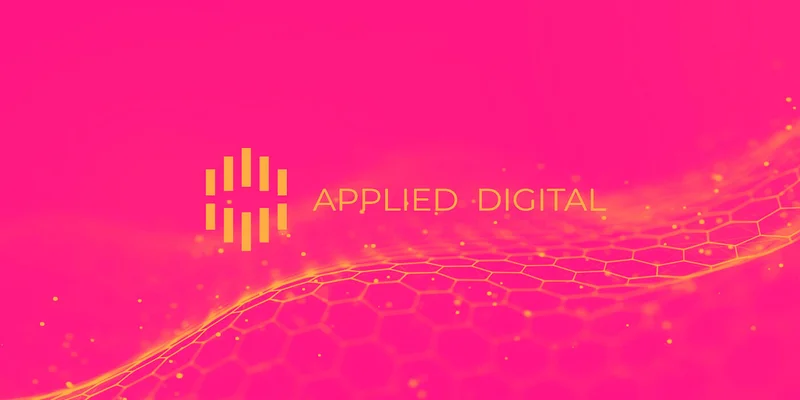Avicii: How AI is Continuing His Musical Legacy
Let’s be honest. You’re probably reading this on a screen. A bright, glowing rectangle of glass and pixels that you hold in your hand or that sits on your desk. For the last two decades, this rectangle has been our primary window—our portal—to the digital world. We tap it, we swipe it, we talk to it. And for all its wonders, it’s a profoundly unnatural way to interact with information. It’s a bottleneck. We’ve built an entire universe of knowledge and connection, but we’re still forced to peer at it through a tiny, demanding keyhole.
I’ve spent my life studying the interface between humans and machines, and I can tell you with absolute certainty that we are standing on the precipice of the most significant shift since the invention of the graphical user interface. The era of the screen is ending. Not because a better screen is coming, but because the very concept of a primary "device" is about to dissolve into the world around us.
This isn't science fiction. It's happening now, in labs I've had the privilege of seeing, and it’s being driven by a quiet revolution in what we call ambient AI. When I first saw the demo, I honestly just sat back in my chair, speechless. This is the kind of breakthrough that reminds me why I got into this field in the first place.
The End of the Rectangle
The big idea isn't about a new phone or a smarter speaker. It's about a fundamental change in how computation happens. For years, we’ve relied on powerful, centralized processors that guzzle energy—the screaming-hot chips in our laptops and data centers. The breakthrough is a new class of decentralized, low-energy AI that can be woven into the fabric of our environment.
This is powered by something called neuromorphic processing—in simpler terms, it means designing chips that operate more like a biological brain. Instead of performing massive calculations in a linear fashion, they operate on an event-based model, only using minuscule amounts of power when new information (a sound, a movement, a change in light) is detected. Think of it like this: your phone’s processor is a Formula 1 engine, always idling high, ready to roar. These new chips are more like a network of nerve endings, individually silent until they have something to report.
This efficiency changes everything. It means you can embed tiny, intelligent sensors everywhere—in walls, desks, clothing, light fixtures—without ever needing to plug them in or change a battery. They can run for years on ambient energy. This creates a persistent, invisible computational layer that understands context. It knows who is in the room, what they are doing, and what they might need next.

The result is a world that responds not to a tap or a click, but to intent. Imagine walking into your workshop with a design problem. You don't pull out a tablet. You simply start talking, describing the issue, and a holographic model appears in the air between your hands. You gesture to change its shape, you ask for a stress analysis, and the lights in the room adjust to give you a better view. The room itself becomes your computer. Does this sound impossibly futuristic? What if I told you the core technology is already working?
A World That Listens
This transition from dedicated devices to an intelligent environment is a paradigm shift on the scale of the printing press. Before Gutenberg, information was a destination; you had to travel to the scroll, to the monastery. The press made information portable. The internet made it instant. But ambient AI makes it present. It’s always there, ready, integrated.
I watched a simulation where an architect was designing a building. She stood in an empty room, and as she described the entrance, the faint outline of a doorway shimmered into existence. She said, "Show me how the morning light will hit this spot in June," and the room’s lighting system instantly simulated the precise angle and warmth of a summer sunrise pouring through a phantom window. The speed of this is just staggering—it’s not just another gadget it’s a fundamental rethinking of our digital existence a shift so profound that the very concept of "logging on" will feel as archaic as cranking a car to start it.
This is the real promise: the dissolution of the boundary between thought and creation. We are removing the clumsy translation layer of keyboards and touchscreens. What does this mean for a musician who can compose a symphony by humming its parts, letting the room orchestrate it in real time? What new forms of collaborative storytelling become possible when a group of people can build a world together just by describing it? We've spent 50 years learning to speak the language of machines. Now, we're finally building machines that can understand the language of humanity.
Of course, a world that listens is a world that's always on. The ethical conversation we must have about this is monumental. The guardrails we build around privacy, consent, and data ownership won't just be important; they'll be the absolute foundation of trust for this entire new ecosystem. How do we ensure this technology empowers us without monitoring us? How do we define personal space when the walls themselves have ears? These aren't technical problems; they are deeply human ones we have to solve together.
The Great Disappearance
For decades, we’ve measured progress by what we could add: more power, more pixels, more features. But the next great leap forward will be defined by what we can take away. The ultimate interface is no interface. The goal has always been to make technology disappear, to let it recede into the background until it’s as natural and unremarkable as electricity. We don't think about the power grid when we flip a switch; we just think about light. Soon, we won't think about the computer; we'll just think about the answer, the creation, or the connection we seek. The screen is dead. And in its place, we’re getting our world back.
-

Warren Buffett's OXY Stock Play: The Latest Drama, Buffett's Angle, and Why You Shouldn't Believe the Hype
Solet'sgetthisstraight.Occide...
-

The Great Up-Leveling: What's Happening Now and How We Step Up
Haveyoueverfeltlikeyou'redri...
-

The Business of Plasma Donation: How the Process Works and Who the Key Players Are
Theterm"plasma"suffersfromas...
-

NJ's ANCHOR Program: A Blueprint for Tax Relief, Your 2024 Payment, and What Comes Next
NewJersey'sANCHORProgramIsn't...
-

Applied Digital (APLD) Stock: Analyzing the Surge, Analyst Targets, and Its Real Valuation
AppliedDigital'sParabolicRise:...
- Search
- Recently Published
-
- Blue Owl: Capital, Stock, & Private Credit Dynamics
- Switzerland: Time Zones, Major Hubs, & Key Logistical Data
- Cook County Treasurer: property taxes, bills, login, and how to pay
- Alibaba Stock: What's Driving the Price Today
- CoreWeave (CRWV): What's Driving Its Stock and Analyst Targets
- ANyONe Protocol: What it is and the real story
- Avicii: How AI is Continuing His Musical Legacy
- Bitcoin: What the Shutdown's End Means for the $112K Forecast
- The AI Debt Boom: Analyzing the Real Financial Risk
- Zcash's Historic Surge: Privacy, Potential, and What's Next
- Tag list
-
- carbon trading (2)
- Blockchain (11)
- Decentralization (5)
- Smart Contracts (4)
- Cryptocurrency (26)
- DeFi (5)
- Bitcoin (30)
- Trump (5)
- Ethereum (8)
- Pudgy Penguins (5)
- NFT (5)
- Solana (5)
- cryptocurrency (6)
- XRP (3)
- Airdrop (3)
- MicroStrategy (3)
- Stablecoin (3)
- Digital Assets (3)
- PENGU (3)
- Plasma (5)
- Zcash (7)
- Aster (4)
- investment advisor (4)
- crypto exchange binance (3)
- SX Network (3)
